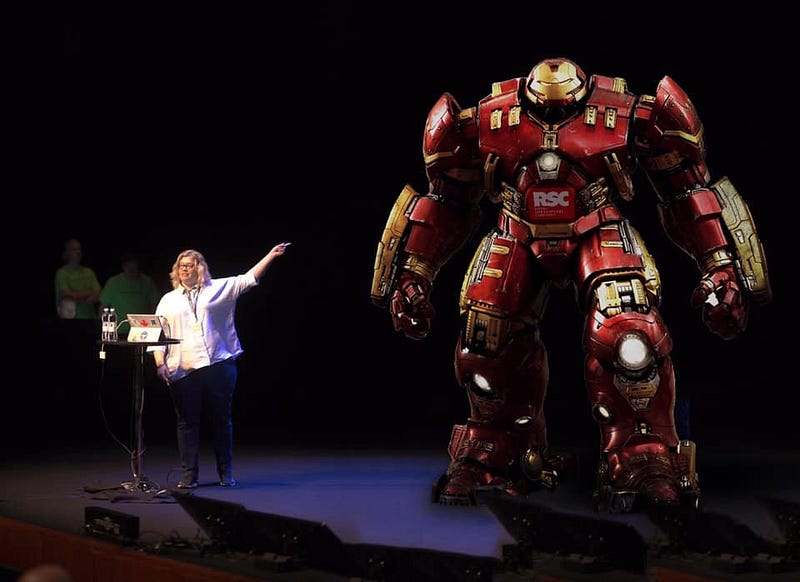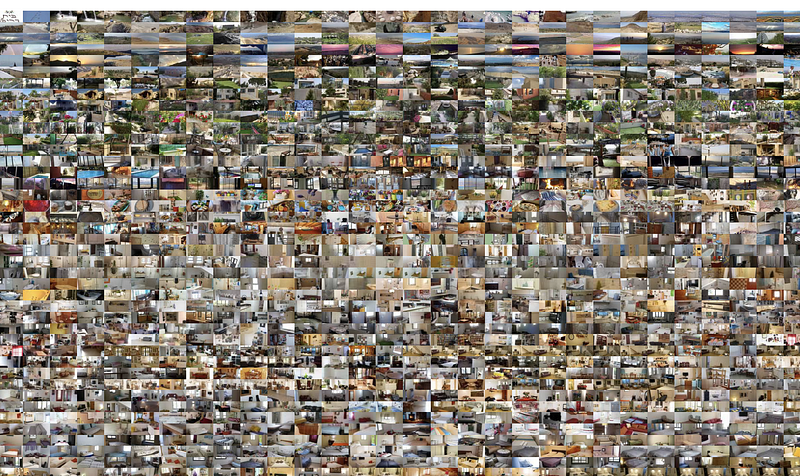
Over the summer, Immerse published this double issue sponsored by the Knight Foundation, exploring the question “In what new ways might museums and cultural institutions engage audiences through immersive experiences?”
The pieces were wide-ranging: from a look at the history of immersion in natural history museums, to an account of how tech is being used to bring the Bard to new audiences, to the role of “sensorial environments” in connecting audiences to the climate crisis. All great, fascinating stuff, but—you might ask—what does that have to do with our mission of “creative discussion of nonfiction storytelling?”
 Image courtesy of Royal
Shakespeare Company
Image courtesy of Royal
Shakespeare CompanyThe answer is that, nowadays, it’s much harder to draw bright lines between cutting-edge art, fiction, documentary, and journalism, as practitioners are all experimenting with the same new tools and platforms. While the intentions may be different, the forms are similar, and in turn these forms shape content producers’ decisions in parallel ways.
In other words, nonfiction storytellers building untested user experiences are as likely to learn from artists, game designers, programmers, or architects as they are from peers in their own field. Plus, the frisson of repurposing forms and approaches associated with a different practice can add resonance to now-calcified practices for representing reality.
That’s why, in this recent piece, Alissa Quart—the executive editor of the Economic Hardship Reporting Project and author of Squeezed: Why Our Families Can’t Afford America— offers her peers this challenge:
When words and traditional genres fail us, what other techniques might journalists deploy to break through the thicket of bigoted remarks and familiar stories of misery? So here’s a modest proposal: let’s take the forms we use to the brink. And let’s also reach for unexpected genres, and fresh modes of expression (and if we are going to use the written word utilize unexpected language). Let’s turn to activist and reported poetry, create tweetstorms as journalism and protest, assemble more unedited audio clips of utter societal cruelty — children crying when removed from their parents. We could even project information onto buildings.
The Eyebeam Center for the Future of Journalism is supporting artist-journalist teams in their own efforts to reimagine how stories are told. Small grants, from $500-$5000, allow these teams to report on issues relevant to both technology and democracy, including data privacy, political influence campaigns, and artificial intelligence. Such collaborations have the potential to be published in major outlets—for example, previous projects by journalists in residencies supported by Eyebeam appeared in Gizmodo, The Nation, and the New York Review of Books.
 Artist Sam
Levigne and journalist Mairav Zonszein used open source and
Airbnb data to reveal properties located in Israeli settlements that discriminate against
Palestinian renters.
Artist Sam
Levigne and journalist Mairav Zonszein used open source and
Airbnb data to reveal properties located in Israeli settlements that discriminate against
Palestinian renters.“Artists deserve a place at the table to talk about what’s happening in their communities,” says Marisa Mazria Katz, Eyebeam’s editorial director. “How do we connect their very valuable work to wider audiences?” She’s no stranger to this nexus—she’s the editor of a new book, Artists on the News, which features selections from Creative Time Reports, a now-shuttered online platform that she co-founded.
She says that she hopes the Eyebeam Center for the Future of Journalism can help “time poor” editors in an industry under siege to understand why working with artists can be powerful. There are still lots of editors who “hear the word art and don’t think that belongs on A1,” she says, but artists have “always been able to upend how we see the world,” and maybe can even “help think through the future of the industry and be that key voice that editors and publishers need right now.”
Of course, both art and technology have long been a part of journalism—from the printing press, to editorial cartoons, to Movietone newsreels, to the whizbang interactive maps that dominate today’s cable news election coverage. But finding ways to artfully deploy these various forms for social good is the real challenge. That’s why we cast a wide net at Immerse, while still trying to keep enough critical distance to not just champion but dissect experiments in nonfiction media and adjacent fields.
So, next time you read something in our pages and wonder “Why are they reporting on this?”—that’s what we’re up to. And the next time you’re making something that doesn’t quite resemble traditional documentary or journalism, well, let us know what you’re up to.
Interface Everywhere is a column written by Immerse editor Jessica Clark, which explores the implications of storytelling at the cusp of the physical and the digital.
Immerse is an initiative of the MIT Open DocLab and The Fledgling Fund, and it receives funding from Just Films | Ford Foundation and the MacArthur Foundation. IFP is our fiscal sponsor. Learn more here. We are committed to exploring and showcasing media projects that push the boundaries of media and tackle issues of social justice — and rely on friends like you to sustain ourselves and grow. Join us by making a gift today.